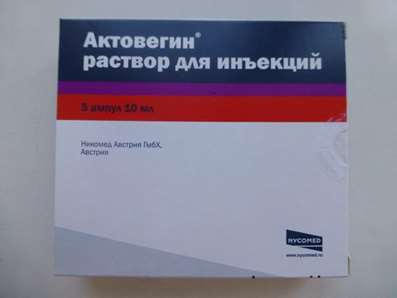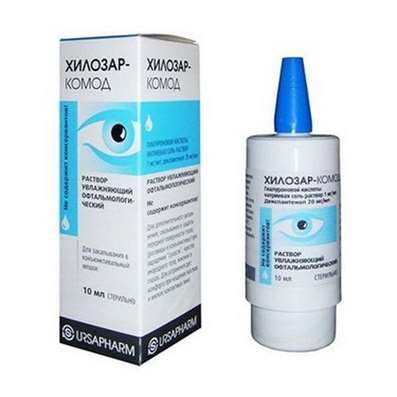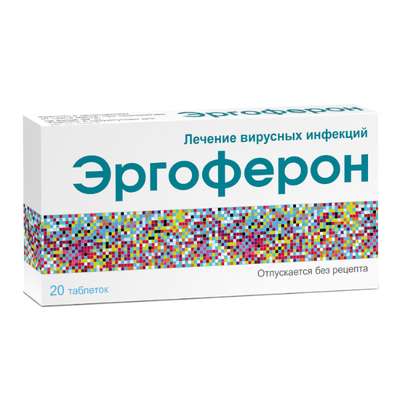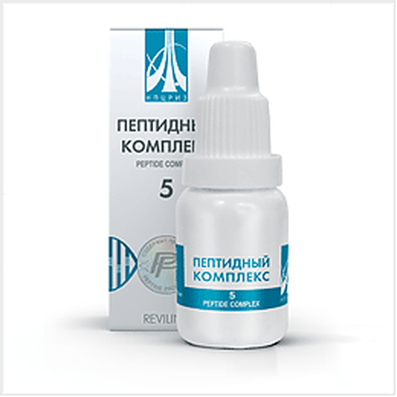Instruction for use: Corvitol 50
I want this, give me price
Trade name of the drug – Corvitol® 50
Dosage Form: tablets
Active substance:Metoprololum
ATX
C07AB02 Metoprolol
Pharmacotherapeutic group: Beta-blockers
The nosological classification (ICD-10)
G43 Migraine: The pain of migraine; Migraine; hemiplegic migraine; Migraine headache; A migraine attack; Continuous headache; hemicrania
I10 Essential (primary) hypertension: hypertension; Arterial hypertension; Arterial hypertension crisis course; Essential Hypertension; Essential hypertension; Essential hypertension; Essential hypertension; Essential hypertension; Primary hypertension; Arterial hypertension, complications of diabetes; The sudden increase in blood pressure; Hypertensive disorders of blood circulation; hypertensive condition; hypertensive crises; arterial Hypertension; malignant Hypertension; Hypertonic disease; hypertensive crises; accelerated hypertension; malignant hypertension; The aggravation of hypertensive disease; Transient hypertension; Isolated systolic hypertension
I15 Secondary hypertension: Arterial hypertension, complications of diabetes; hypertension; The sudden increase in blood pressure; Hypertensive disorders of blood circulation; hypertensive condition; hypertensive crises; hypertension; arterial Hypertension; malignant Hypertension; hypertensive crises; accelerated hypertension; malignant hypertension; The aggravation of hypertensive disease; Transient hypertension; hypertension; Arterial hypertension; Arterial hypertension crisis course; renovascular hypertension; Hypertension symptomatic; Renal hypertension; Renovascular hypertension; renovascular hypertension; Symptomatic hypertension
I20 Angina [angina]: Heberden disease; Angina pectoris; The attack of angina pectoris; recurrent angina; Spontaneous angina; Stable angina pectoris; Angina rest; Angina progressing; Angina mixed; Angina spontaneous; stable angina; Chronic stable angina; Angina Syndrome X
I25.2 Transferred last myocardial infarction: Cardiac syndrome; Myocardial infarction; post-MI; Rehabilitation after myocardial infarction; Reocclusion of the operated vessel; Angina postinfarctnaya; Status after myocardial infarction; Status after myocardial infarction; myocardial infarction
I47.1 Supraventricular tachycardia: Supraventricular paroxysmal tachycardia; supraventricular tachyarrhythmia; supraventricular tachycardia; Supraventricular arrhythmias; Supraventricular paroxysmal tachycardia; supraventricular tachyarrhythmias; supraventricular tachycardia; Neurogenic sinus tachycardia; orthodromic tachycardia; Paroxysmal supraventricular tachycardia; Paroxysm of supraventricular tachycardia; Paroxysm of supraventricular tachycardia with WPW-syndrome; Paroxysm of atrial tachycardia; Paroxysmal supraventricular tachyarrhythmia; Paroxysmal supraventricular tachycardia; Politopnye atrial tachycardia; Atrial fibrillation; Atrial tachycardia is true; Atrial tachycardia; Atrial tachycardia with AV block; reperfusion arrhythmias; Reflex Bertsolda-Jarisch; Recurrent sustained supraventricular paroxysmal tachycardia; Symptomatic ventricular tachycardia; Sinus tachycardia; Supraventricular paroxysmal tachycardia; supraventricular tachyarrhythmia; supraventricular tachycardia; supraventricular arrhythmia; supraventricular arrhythmias; Tachycardia of AV connections; supraventricular tachycardia; Tachycardia orthodromic; sinus tachycardia; The nodal tachycardia; Chaotic atrial tachycardia politopnye; Wolff-Parkinson-White
I49.4 Other and unspecified premature depolarization: extrasystole arrhythmia; extrasystole; extrasystole unspecified
Composition (per tablet):
Corvitol 50
metoprolol tartrate 50 mg
Excipients: lactose monohydrate; magnesium stearate; povidone; croscarmellose sodium; talc; highly dispersed silica
in blister 10 pcs .; a stack of cardboard 3 or 5 blisters.
Corvitol 100
metoprolol tartrate 100 mg
Excipients: lactose monohydrate; magnesium stearate; povidone; croscarmellose sodium; talc; highly dispersed silica
in blister 10 pcs .; a stack of cardboard 3 or 5 blisters
Description
Round, plane-white tablet, with bevelled edges, fitted with unilateral notch for division.
Characteristic
It is a lipophilic selective beta1-blocker without intrinsic sympathomimetic activity with faint membrane stabilizing action.
Pharmacological Properties of Corvitol® 50
Pharmachologic effect - antianginal, antihypertensive, anti-arrhythmic.
Pharmacodynamics
Blocking in low doses of beta1-adrenergic receptors of the heart, reduces the formation of catecholamines stimulated cAMP from ATP, reduces intracellular calcium ion current, has a negative chrono-, Drome, BATM and inotropic effect (slows heart rate, depresses conduction and excitability, reduces myocardial contractility). OPSS early use of beta-blockers (for the first 24 hours after oral administration) is increased (as a result of increasing the activity retsiproktnogo alpha adrenoceptor stimulation and removal beta2- adrenoceptor), which is 1-3 days returns to the original, and for long-term administration - reduced.
The antihypertensive action is due to a decrease in cardiac output and synthesis of renin inhibition of the renin-angiotensin system (is of great importance in patients with initial hypersecretion of renin) and central nervous system, restoring the sensitivity of baroreceptors of the aortic arch (not going to increase their activity in response to a reduction in blood pressure) and, finally, a decrease in peripheral sympathetic influences. It reduces high blood pressure at rest, exertion and stress.
The hypotensive effect develops rapidly (Sad reduced after 15 minutes, maximum - 2 hours) and lasts for 6 hours, Dad slowly changing: a steady decline is observed after a few weeks of regular intake.
Antianginal effect is determined by a decrease in myocardial oxygen demand by reducing heart rate (diastole lengthening and improving myocardial perfusion) and contractility, as well as a decrease in the sensitivity of the myocardium to the effects of the sympathetic innervation. It reduces the number and severity of angina attacks and increase exercise tolerance.
The antiarrhythmic effect is due to the elimination of arrhythmogenic factors (tachycardia, increased activity of the sympathetic nervous system, increased cAMP levels, hypertension), decrease in the rate of spontaneous excitation of the sinus and ectopic pacemakers and slowing AV conduction (primarily in the anterograde and, to a lesser extent, in the retrograde direction through the AV node and on additional routes.
If supraventricular tachycardia, atrial fibrillation, sinus tachycardia with functional heart disease and hyperthyroidism, heart rate slows, or even lead to the restoration of sinus rhythm. It prevents the development of migraine.
When used in high therapeutic doses, unlike nonselective beta blockers, it has a less pronounced effect on organs comprising a beta2-adrenoceptor (pancreas, skeletal muscle, smooth muscle of peripheral arteries, bronchial and uterine) and carbohydrate metabolism. When used in large doses (over 100 mg / day) has a blocking effect on both beta-adrenoceptor subtype.
Pharmacokinetics
Metoprolol is rapidly and almost completely (95%) absorbed from the gastrointestinal tract. Cmax plasma levels achieved within 1-2 hours after ingestion. T1 / 2 - an average of 3.5 hours (ranging from 1 to 9 hours). It undergoes extensive first-pass metabolism, bioavailability of 50% at the first reception and increases to 70% when applied repeatedly. Food intake increases the bioavailability of 20-40%. The bioavailability of metoprolol increased by cirrhosis of the liver. Binding to plasma proteins - 10%. It penetrates through the BBB and placental barrier. Provided in the breast milk in small quantities. It is metabolized in the liver, two metabolites possess beta adrenoblokiruyuschey activity. The metabolism of the drug is involved CYP2D6 enzyme system. About 5% of the drug is excreted unchanged by the kidneys.
Treatment of patients with impaired renal function does not require correction of the dose. Abnormal liver function slows the metabolism of the drug, and in cases of liver failure, the dose should be reduced. Not removed by hemodialysis.
Indications for Corvitol® 50
Arterial hypertension (as monotherapy or in combination with other antihypertensive agents), including hyperkinetic type of tachycardia.
CHD: myocardial infarction (secondary prevention), prevention of angina attacks.
Cardiac arrhythmias (supraventricular tachycardia, ventricular premature beats).
Prophylaxis of migraine attacks.
Contraindications for Corvitol® 50
Hypersensitivity to metoprolol or other ingredients, other beta-blockers, cardiogenic shock, AV block II-III degree sinoatrial block, sick sinus syndrome, bradycardia (heart rate <50 bpm), severe peripheral circulatory disorders, heart failure decompensated, Prinzmetal angina, hypotension (in case of use in the secondary prevention of myocardial infarction - SBP <100 mm Hg..), acute myocardial infarction (heart rate <45 beats per minute, the PQ interval is> 0.25, SBP < 100 mm Hg. Art.), breastfeeding, concomitant use of MAO inhibitors or simultaneous on / in the introduction of verapamil (see. "Interaction"), age 18 years (effectiveness and safety have been established).
Precautions (see also "Special Instructions".) - Diabetes, metabolic acidosis, bronchial asthma, COPD (emphysema, chronic obstructive bronchitis), obliterating peripheral vascular disease (intermittent claudication, Raynaud's syndrome), chronic liver and / or kidney failure , myasthenia gravis, pheochromocytoma, AV block I degree, thyrotoxicosis, depression (including history), psoriasis, pregnancy, old age.
Pregnancy and breast-feeding
During pregnancy appoint strict conditions, taking into account the benefit / risk (in connection with the development of fetal bradycardia, hypotension, hypoglycemia). This careful monitoring, especially in the development of the fetus. Strict monitoring of the newborn for 48-72 hours after delivery. Influence of metoprolol on the newborn while breastfeeding has not been studied, so women taking Corvitol 50 and 100, you should stop breast-feeding.
Side effect of Corvitol® 50
CNS: fatigue, weakness, headache, dizziness, slowing of mental and motor reactions, paresthesia in the extremities (in patients with intermittent claudication and Raynaud's syndrome), depression, anxiety, decreased alertness, drowsiness, insomnia, nightmares, confusion or short-term memory impairment, asthenic syndrome, muscle weakness.
From the sensory organs: rarely - decreased vision, decreased secretion of tear fluid, dryness and soreness of the eyes, conjunctivitis, tinnitus, rhinitis.
Cardio-vascular system: sinus bradycardia, palpitations, marked reduction in blood pressure, orthostatic hypotension (dizziness, sometimes fainting); rare - decrease myocardial contractility, a temporary aggravation of symptoms of chronic heart failure (edema, swelling of the feet and / or lower part of the legs, shortness of breath), arrhythmias, a manifestation of vasospasm (strengthening of peripheral blood circulation, cooling of the lower extremities, Raynaud's syndrome), conduction disturbances infarction, cardialgia .
From the digestive system: nausea, vomiting, abdominal pain, dry mouth, diarrhea, constipation, change in taste.
For the skin: exacerbation of psoriasis flow, psoriasiform skin reactions, skin flushing, rash, photodermatosis, increased sweating, reversible alopecia.
The respiratory system: nasal congestion, difficulty exhaling (bronchospasm when administered at high doses - a loss of selectivity and / or in predisposed patients), dyspnea.
From the Endocrine: hypoglycemia (in patients receiving insulin), rarely - hyperglycemia (in patients with non-insulin dependent diabetes mellitus), hypothyroid state.
Laboratory findings: rarely - thrombocytopenia (unusual bleeding and hemorrhage), agranulocytosis, leukopenia, elevated liver enzymes, rarely - hyperbilirubinemia.
Effect on the fetus: possible intrauterine growth retardation, hypoglycemia, bradycardia.
Allergic reactions: urticaria, pruritus, rash.
Other: pain in the back or joints, like all beta-blockers in rare cases may cause a slight increase in body mass, decreased libido and / or potency, the sudden cessation of treatment - withdrawal syndrome (increased angina attacks, increased blood pressure).
Interaction
Not recommended simultaneous application with MAO inhibitors due to the significant increase in the hypotensive action. Break in treatment between receiving MAO inhibitors and metoprolol should be at least 14 days. Simultaneous in / with the introduction of verapamil can cause heart failure. Co-administration of nifedipine results in significant reduction in blood pressure. Means for inhalation anesthesia (derivatives of hydrocarbons) increase the risk of depression and myocardial function of arterial hypotension. Beta adrenostimulyatorov, theophylline, cocaine, estrogens (sodium retention), indomethacin, and other NSAIDs (sodium retention and blocking PG synthesis by the kidneys) weaken hypotensive effect. It is noted increased inhibitory action on the central nervous system - with the standard; cardiodepressive summation effect - with means for anesthesia; increased risk of peripheral circulatory disorders - with ergot alkaloids. When co-administered with oral hypoglycemic agents may reduce the effect; insulin - increasing the risk of hypoglycemia, increased its severity and extension, masking some symptoms of hypoglycemia (tachycardia, sweating, increased blood pressure). When combined with antihypertensives, diuretics, nitroglycerin or CCBs may develop a sharp decrease in blood pressure (special caution is required when combined with prazosin); an increase in the severity of heart rate deceleration and oppression AV conduction - the application of metoprolol and verapamil, diltiazem, antiarrhythmics (amiodarone), reserpine, alpha-methyldopa, clonidine, guanfacine, funds for general anesthesia and cardiac glycosides. If metoprolol and clonidine are taking at the same time, when the abolition of metoprolol, clonidine overturned in a few days (due to the risk of occurrence of withdrawal syndrome). Inductors microsomal liver enzymes (rifampicin, barbiturates) lead to increased metabolism of metoprolol, metoprolol to lower plasma concentrations and reduced effect. Inhibitors (cimetidine, oral contraceptives, phenothiazines) - increase the concentration in the blood plasma. The allergens used for immunotherapy, or allergen extracts for skin tests when combined with metoprolol increase the risk of systemic allergic reactions or anaphylaxis; iodine-containing contrast media for the on / in the increase the risk of anaphylactic reactions. Reduces clearance of xanthine (except dyphylline), especially with the initially increased clearance of theophylline under the influence of smoking. It reduces clearance of lidocaine, increases the concentration of lidocaine in the blood plasma. Enhances and prolongs the effect of muscle relaxants aitidepolyarizuyuschih; It extends the anticoagulant effect of coumarin. In a joint application with ethanol increases the risk of significant decrease in blood pressure.
Dosage and Administration
Inside, after eating, not chewing and washing down with a liquid; Tablets can be divided in half. When a single dose Corvitol should be taken in the morning, with two single doses - in the morning and evening. The treatment time is not limited and depends on the characteristics of the disease.
Corvitol 50
Arterial hypertension and angina. According to Table 2. 1 time per day, or 1 table. Two times a day. If necessary, may increase the dose to 2 tablets. Two times a day. The maximum daily dose - 200 mg.
Functional heart disorders accompanied by tachycardia. Initial dose - 50-100 mg / day in 1-2 reception. If necessary, the dose may be increased to 200 mg / day in 2 divided doses.
Treatment of acute myocardial infarction. 25-50 mg every 12 hours (1 / Table 2.1.). If necessary, the dose may be increased to 100-200 mg / day: Table 1-2. 2 times a day, under the supervision of the ECG, blood pressure and the patient's condition.
Treatment duration should establish the doctor individually. According to the results of clinical trials of the minimum course duration is 3 months; treatment is recommended to continue for 1-3 years.
Prophylaxis of migraine attacks. According to Table 2. 1 time per day, or 1 table. Two times a day. Upon reaching the therapeutic effect of the dose is reduced (under medical supervision). In elderly patients with impaired renal function, as well as the need for dialysis dose is not changed. If abnormal liver function the dose should be reduced depending on the clinical condition.
Corvitol 100
Arterial hypertension and angina. According to Table 1. 1 time a day or 1/2 Table. Two times a day. If necessary, the dose may be increased up to 1 table. Two times a day. The maximum daily dose - 200 mg.
Functional heart disorders accompanied by tachycardia. Initial dose - 50-100 mg / day in 1-2 reception. If necessary, the dose may be increased to 200 mg / day in 2 divided doses.
Treatment of acute myocardial infarction. At 25-50 mg every 12 hours (1 / 4-1 / 2 table.). If necessary, the dose may be increased to 100-200 mg / day: 1 / 2-1 Table. 2 times a day, under the supervision of the ECG, blood pressure and the patient's condition.
Treatment duration should establish the doctor individually. According to the results of clinical trials of the minimum course duration is 3 months; treatment is recommended to continue for 1-3 years.
Prophylaxis of migraine attacks. According to Table 1. 1 time a day or 1/2 Table. Two times a day. Upon reaching the therapeutic effect of the dose is reduced (under medical supervision). In elderly patients with impaired renal function, as well as the need for dialysis dose is not changed. If abnormal liver function the dose should be reduced depending on the clinical condition.
Overdose
Symptoms: expressed severe sinus bradycardia, dizziness, nausea, vomiting, cyanosis, marked reduction in blood pressure, arrhythmia, ventricular premature beats, bronchospasm, fainting; in acute overdose - cardiogenic shock, loss of consciousness, coma, AV block (up to the development of a complete transverse blockade and heart failure), cardialgia. The first signs of overdose manifested after 20 minutes - 2 hours after ingestion.
Treatment: gastric lavage and the appointment of absorbent; Symptomatic therapy: the marked decrease in blood pressure - the patient must be in the Trendelenburg position; in the case of excessive reduction of blood pressure, bradycardia and heart failure - I / O, with an interval of 2-5 minutes, beta adrenostimulyatorov - to achieve the desired effect or / 0.5-2 mg atropine sulfate. In the absence of a positive effect - dopamine, dobutamine or norepinephrine (noradrenaline). As a follow-up appointment may 1-10 mg glucagon formulation transvenous intracardial electrical stimulator. If bronchospasm should be entered in / beta2-adrenergic stimulants. In convulsions - slow in / diazepam. Hemodialysis is not effective.
Precautionary measures
Monitoring of patients receiving beta-blockers, including regular monitoring of heart rate and blood pressure, the content of blood glucose in patients with diabetes (1 every 4-5 months). If necessary, for patients with diabetes mellitus insulin or hypoglycemic agents appointed inside, be selected individually. It is necessary to train the patient's heart rate calculation method and instruct on the need of medical advice in heart rate <50 beats per minute. When you receive a dose of> 200 mg / day reduced cardioselective. In heart failure treatment Korvitolom begin only after the compensation stage. Perhaps the increased severity of hypersensitivity reactions (with aggravated allergic history) and the lack of effect of the introduction of the usual doses of epinephrine (adrenaline). May exacerbate symptoms of peripheral arterial circulation. Abolition of the drug was gradually reducing the dose within 10 days. In a dramatic treatment may be withdrawal symptoms (increased angina attacks, increased blood pressure). Particular attention is to remove the drug should be given to patients with angina pectoris. When angina selected dose should provide a resting heart rate in the range of 55-60 beats per minute, with a load - no more than 110 beats per minute. Patients who use contact lenses should bear in mind that during treatment with beta-blockers may reduce the production of tear fluid. Metoprolol may mask some of the clinical manifestations of hyperthyroidism (eg tachycardia). Abrupt withdrawal in patients with thyrotoxicosis is contraindicated because the symptoms can increase. In diabetes may mask tachycardia caused by hypoglycemia. In contrast, nonselective beta-blockers practically no increase insulin-induced hypoglycemia and delay recovery of blood glucose to normal levels. The appointment to patients with bronchial asthma as a concomitant therapy using beta2-adrenostimulyatorov; in pheochromocytoma - alpha-blockers. When the need for surgical intervention must notify the anesthesiologist of therapy (range of means for general anesthesia with minimal negative inotropic effect); discontinuation of the drug is not recommended. Drugs that reduce the reserves of catecholamines (eg reserpine), may enhance the effect of beta-blockers, so patients taking these combinations of drugs should be under constant supervision of a physician to identify excessive reduction in blood pressure and bradycardia. Elderly patients are advised to regularly monitor liver function. Correction of dosage regimen is required only in the case of elderly patients increasing bradycardia (<50 beats per minute), marked reduction in blood pressure (SBP <100 mm Hg..), AV blockade bronchospasm, ventricular arrhythmias, severe liver dysfunction; it is sometimes necessary to discontinue treatment. Patients with severe renal impairment is recommended to monitor renal function. There should be a special control over the condition of patients with depressive disorders, receiving metoprolol; in the case of depression, caused by the intake of beta-blockers, it is recommended to discontinue therapy. During treatment with metoprolol should wear appropriate clothing, as the drug can cause skin allergy to sunlight. Due to the lack of sufficient clinical data product is not recommended for use in children. In the period of treatment should refrain from driving motor vehicles and activities potentially hazardous activities that require high concentration and psychomotor speed reactions, that the admission of ethanol.
Manufacturer
"Berlin-Chemie AG / Menarini Group", Germany.
Literature
1. Yusuf S. et al. Beta blockade during and after myocardial infarction: an overview of the randomized trials. Progress in cardiovascular diseases.- 1985.- 27.- P. 335-371.
2. Penman W.A. et al. Pilot study of antihypertensive treatment in the elderly practitioner.- 1982.- 226.- P. 1180-1182.
Storage conditions of Corvitol® 50
The temperature is not above 30 ° C.
Keep out of the reach of children.
Shelf life
3 years.
Do not use beyond the expiration date printed on the package.

 Cart
Cart





